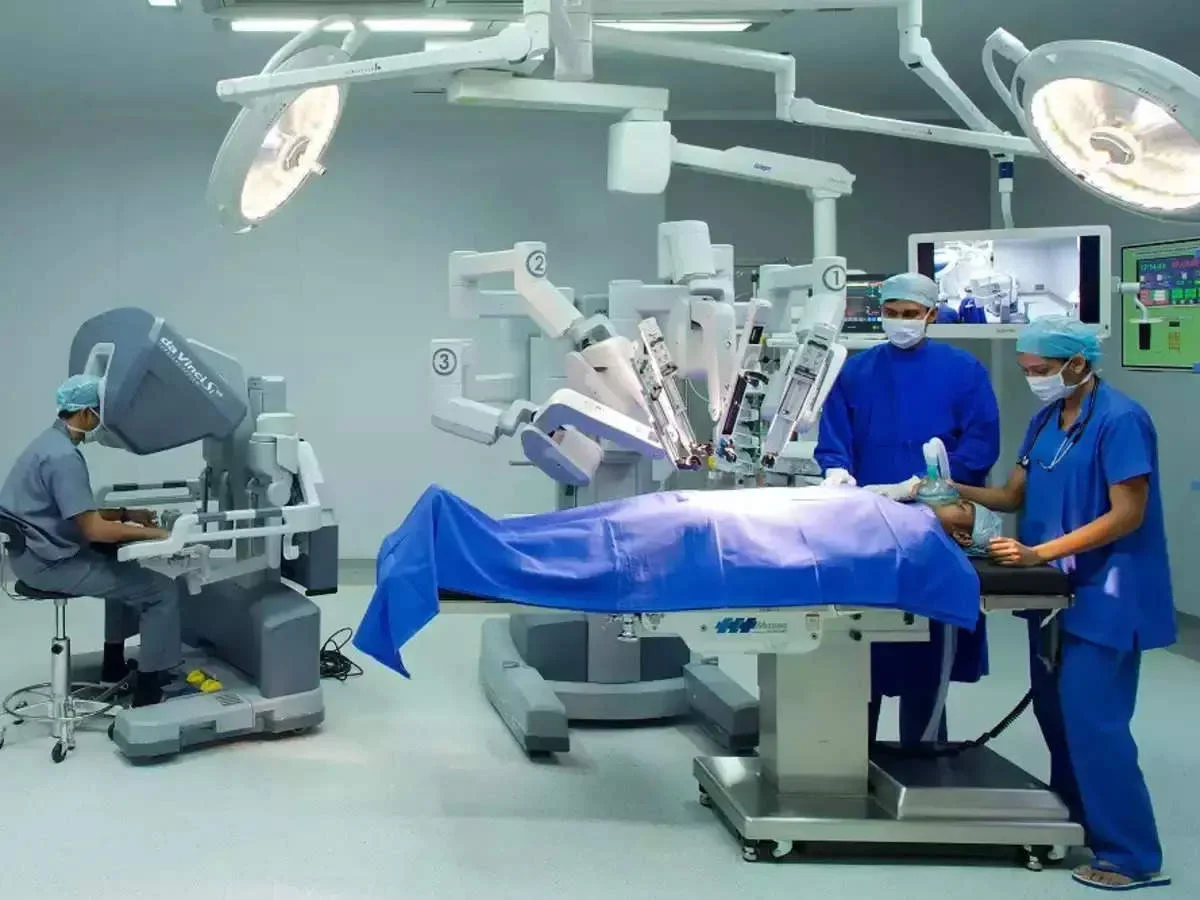Robotic Surgery

Robotic Surgery
Robotic surgery, also known as robot-assisted surgery, is a type of minimally invasive surgical procedure performed with the assistance of robotic systems. It combines advanced technology, computer software, and the skill of a surgeon to perform precise and controlled surgical interventions.
In robotic surgery, a robotic system is used to manipulate surgical instruments with great precision. The system consists of a console where the surgeon sits and controls the robotic arms, which are equipped with surgical instruments.
These instruments are inserted into the patient’s body through small incisions, similar to traditional laparoscopic surgery. The robotic system provides several advantages over traditional surgical techniques. It offers improved dexterity, enhanced visualization, and greater precision due to its ability to scale down the movements of the surgeon’s hand. The system also filters out any hand tremors, allowing for steadier movements during the procedure.
One key component of robotic surgery is the use of a high-definition 3D camera system. This provides the surgeon with a detailed, magnified view of the surgical site, enabling better visualization of structures and improved accuracy.
Robotic surgery has been used in various medical specialties, including urology, gynecology, cardiothoracic surgery, general surgery, and more. Common procedures performed using robotic surgery include prostatectomy, hysterectomy, colorectal surgery, cardiac valve repair, and gastric bypass surgery, among others.
Benefits of robotic surgery can include shorter hospital stays, reduced blood loss, smaller incisions resulting in less scarring, reduced pain and discomfort, faster recovery times, and improved surgical outcomes. However, it’s important to note that the specific benefits and risks may vary depending on the procedure and individual patient factors.
It’s crucial for patients considering robotic surgery to consult with their healthcare providers to determine the best approach for their specific condition and circumstances. Surgeons receive specialized training to operate the robotic system effectively and safely, ensuring the best possible outcomes for patients.

